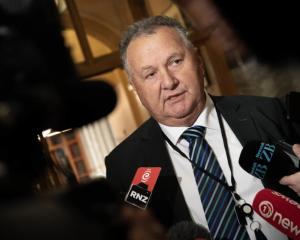
Announcing his bid in Auckland this afternoon, Mr Parker said he will restore the party's focus, passion and drive so it can become a unifying force for New Zealanders.
He said he had been approached by New Zealanders "from all walks of life" in the past 10 days asking him to stand.
"In less than two years the New Zealand Labour Party will mark its centenary - its 100th birthday.
"I am simply not prepared to let this milestone become a tombstone.
"A tombstone for a once great party that once did great things for New Zealand."
If successful in his bid, Mr Parker said he would review all of Labour's policies.
"We lost badly and I get it."
Mr Parker said Labour needed to get its house in order.
"History teaches us a house divided against itself cannot stand.
"All of us claim to be able to untie the caucus and the party.
"From unity comes strength. Unity also brings confidence - and success.
"I believe I am that leader."
His announcement brings the number of candidates for the job to four - David Cunliffe, Grant Robertson, Andrew Little and Mr Parker.
Mr Parker is highly respected within Labour and his supporters believe he is best placed to ease the tension between caucus and members, unify caucus and get Labour back in front of the voters' eyes for the right reasons. From Dunedin but based in Auckland he also adds another non-Wellington name to that of Mr Cunliffe, as well as a business background.
He was appointed acting leader by caucus a week after the election after Mr Cunliffe stepped down to trigger the leadership contest.
Mr Parker's entry will make it almost inevitable that the contest will not be decided on the first round of votes.
Labour has a preferential voting system for its leadership under which members, caucus and affiliates rank candidates in order of preference.
In each round the lowest ranked candidate is knocked out and their supporters' second preference votes are tallied up until one candidate has more than 50 per cent.
By Brendan Manning












